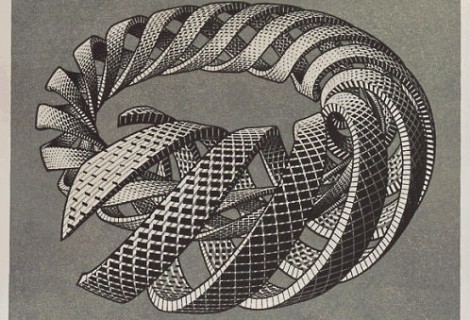seeing upside down (with bonus experiment!)
Did you know that your eye is related to the pinhole camera?
Light enters through the pupil of the eye, and a tiny image of the outside world fans out across the back of the eye, on the retina. If you have an extremely dark room that has a window to the outside world, try this:
Get some pieces of thick card-stock paper, or even a piece of cardboard, that covers your window entirely. Make sure that your room is as dark as possible and that no light enters (this is much more difficult to achieve than you may think, but perfection is not required). Poke a small hole, about 3 millimeters in diameter, in the paper, so that light from outside your room can enter through the hole (this works best during bright daylight conditions outside). Now get a white towel or sheet, or even a white piece of paper, and hold it right on the hole. Now slowly move the piece of paper/sheet/whatever back from the hole… and be AMAZED! No really, you will be amazed, trust me!
For the truly inquisitive (that should be all of you reading this), try different sized holes, as well as holes of different shape, and see what effects this has on the resulting experience. Also pay close attention to what happens as you move your ‘screen’ closer or farther away from the hole. Now, for even MORE ridiculous fun, have someone go outside and move around in front of the window as you watch the screen on the inside…
But this was all just a little experimental tangent to my real topic, which is that, just as in the above pin-hole camera exercise, the image which falls upon your retina is inverted. Why, then do we experience the world ‘right side up’?

A ridiculously simplified picture of the inversion of images on the retina.
Our brains – and this is a mysterious process – re-inverts the image so that our experience of the retinal impulses fits with information we get from other senses. Equally fascinating, the process which the brain accomplishes is not restricted to any particular given orientation of the incoming retinal stimulus. What I mean is that the image of the world can be presented onto the retina with any arbitrary rotation, and given sufficient time, the brain will compensate in such a way as to perfectly cancel out the rotation so that we again experience the world ‘right side up’.
Even more interestingly (I know, can you stand it?) it isn’t just with orientation that this occurs. Check out this quote from a 1967 paper by J.J. Gibson:
“The altered ‘form’ of the sample-field produced by spectacles can be of many sorts: Stratton’s inversion, or Erisman’s reversal, or Kohler’s reversal, or tilt, or displacement (with wedge-prisms), and curvature, and compression, or ordinary telescopic magnification or minification, or single-meridian magnification or minification (Ogle), or for that manner, a non-geometrical bias of the sample-field such as the chromatic aberrations or color. The ‘invariance theory’ should still apply. We ordinarily don’t notice the forms of the visual field anyway, except in pictures: what we detect are invariants.”
Such phenomena are well known in the realm of optics (the first such experiments being performed by Stratton in 1896, and later by Ivo Kohler in the 1950’s) where research subjects (probably volunteer grad students) wore a prism that inverted the retinal image all day long for a period of at a few weeks. For many subjects, it took approximately a week or so for the image to switch.
Once they adapted the research subjects then experienced the world ‘normally’ with no strangeness – their brain simply found it more economical to re-integrate the incoming stimulus in a way that allowed it to mesh with other sensory stimuli; the system tended towards a relatively stable attractor.
Of course, when the subjects took the glasses off, the world re-inverted, and they experienced the world upside down, just like they did when the glasses first were put on, but the re-adaptation took much less time, and subjects could even become ‘practiced’ at switching between wearing the prism glasses and having them off.
Do you not find such a phenomenon both compelling and mysterious? Do you not sit in awe at the complex workings going on behind your eyes all the time?
Our sense of touch and proprioception play a large role here, but also hearing and other senses which include directionality in relation to our 3D physical space. Even more important, however, is the ability for the subject to actively move through space with the altered perception. If the subject is restricted from moving (some subjects were literally strapped into a wheelchair), no visual adaptation occurs, and the world continues to be experienced in an inverted fashion.
A lesson to be learned from this is that we are complex beings, WHOLE beings, in whom stream diverse sensory flows, which, like rivers in confluence, turbulently spin off vortices in a chaotic and ordered dance of becoming. Our senses, rather than objectively reporting pure sensory ‘data’ to a central computer, are continually involved in, reshaped by, and reciprocally influenced by the dynamic, pulsing whole that lies beheath and within conscious experience. This includes our emotions, our thoughts, our desires, as well as our other senses, our metabolism, our memory, and our will, to name just a few.
No sense is isolated from any other. Channels overlap. Information bleeds. The source is also the receiver. The created is also the creator.
Mmmmmmmm. chewy!




